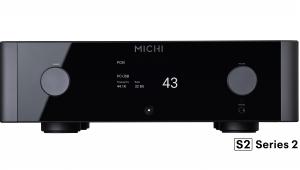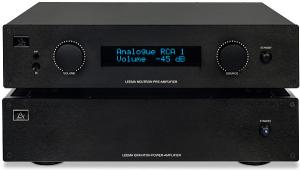Leak Stereo 20 (Vintage)
With the introduction of stereo LPs in 1958, Leak wasted no time in bringing stereo equipment to market. The fi rst public demonstration of the Stereo 20 amp and matching preamp took place in April 1958 at the Audio Fair in London. This must have been quite a coupe for Leak as most rival manufacturers at the show were demonstrating mono equipment.
The price of the Stereo 20 was 29 Guineas with its partnering Point One stereo preamp costing 20 Guineas. When you consider that a single TL12 Plus mono amplifi er retailed at 18 Guineas, the stereo version was a bargain!
The very first Stereo 20s manufactured came fi nished in Champagne Gold, which soon changed to a Gold Bronze. Later in 1964 the paintwork was changed to a dark metallic grey.The early Champagne Gold versions are few and far between. We have only seen three examples in the wild in over 40 years!
Circuit-wise, the Stereo 20 is similar to its earlier mono brother the TL12 Plus, having identical output stages. In the Stereo 20 the EF86 and ECC81 used in the earlier stages of the TL12 Plus were replaced by two ECC83 double triodes. Meanwhile, the HT supply to both channels is fed from a single GZ34 rectifier with simple resistor/ capacitor smoothing.
One safety feature incorporated is the use of a 100ohm/1W resistor that overheats and de-solders itself from the circuit board when overloaded. This is a simple, utilitarian, but effective, method of protecting the power supply when excessive current is drawn. In 1961 the output transformer specifi cations were changed from having 49% to 25% ultra linear screen tappings.
LOVE AT FIRST LISTEN
A friend was dumping a 110V ‘export’ package at such a low price that I told him I’d take a look at it. His Point One bore a gorgeous solid brass fascia, with the finest pots I’ve ever swivelled, and the ’20 wore the rare baseplate. I figured I’d have ’em even if only as coollooking paperweights. They sat for years before I fired them up, after they were overhauled by legendary valve amp restorer Mike Poynter, who used to run a repair and service company called Station Sounds.
Instead of the dull Britamp I was expecting, Leak’s reputation having suffered since its demise, I heard the sort of performance that seduces you instantly, an effect like the first time you laid eyes on Halle Berry or tasted a glass of Solaia. Every one of you knows what I mean, each of you having experienced a gut response to a component, an intuitive reaction that needed no verbiage, no justifi cation, no explanation. It just sounded right in every way.
Although the preamp, like most vintage control units, shows its age with noise, the amplifi er was and is quiet, clean, open and transparent. It is fast enough to keep up with lightning-quick banjo-picking behind Alison Krauss, smooth enough to de-burr even the screeching-est of fiddling. What’s more, despite appearing during stereo’s earliest days, it ‘gets’ 3D.
For my money, the Leak Stereo 20 is one of the ten best amplifi ers of the 1950s, with only its power rating allowing it to be bettered by some of its contemporaries, and its soft bass sounding alien to modern ears. Other than those two clues, no-one would ever guess in a blind test that it pre-dates this century.
VERDICT
A session with the Leak Stereo 20 cannot fail to impress upon you that it is, perhaps unjustly, overshadowed by the lesscommanding Quad II. It sings, it soars and it sounds – unlike the ’II – decidedly ‘modern’. It may have been born in 1958, but hot damn, it’s still rocking in 2010.
Originally published in the Yearbook 2010


























































